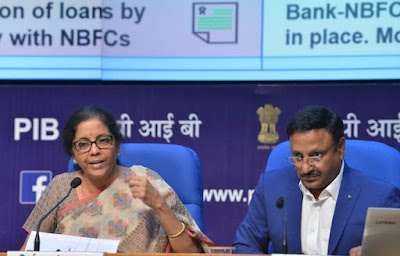Punjab National Bank to be merged with Oriental Bank and United Bank
HIGHLIGHTS
- OBC, United Bank of India merged into PNB
- Syndicated Bank merged into Canara Bank
- No. of public sector banks reduced from 27 to 12

Nirmala Sitharaman says the merger of PNB with OBC and United Bank will make it the second-largest PSB with Rs 18 lakh crore business and second-largest branch network in India
Continuing the Modi government's mega bank merger push for structural reforms in the banking sector, Union Finance Minister Nirmala Sitharaman on Friday said the government would merge Punjab National Bank with Oriental Bank and United Bank. This has been done after the successful merger of three public sector banks - Bank of Baroda, Vijaya Bank and Dena Bank - earlier this year.
n second set of major policy announcements to address economic concerns, the Union Finance Minister Nirmala Sitharaman announced to merge six public sector banks with four better performing anchor banks. This came as a mega banking realignment by the Narendra Modi government in order to streamline their operation and size.
The Oriental Bank of Commerce (OBC) and the United Bank of India (UBI) has been merged into the Punjab National Bank (PNB). The PNB will now be the second largest PSU bank after the State Bank of India, which earlier saw a similar consolidation with all assocites merging with it.
The Syndicate Bank has been merged with the Canara Bank while the Andhra Bank and Corporation Bank will merged with Union Bank of India.

The Allahabad Bank will merge into the Indian Bank. This will make it the seventh largest state-owned bank in India. With this annoucement of merger of banks, the total number of PSU banks will come down to 12. Before 2017, when the governemnt rolled out bank-merger plan, the number of public sector banks in India was 27.
WHY WERE THESE BANKS MERGED?
Explaining the rationale behind these mergers, Nirmala Sitharaman said these decisions were taken with the objective making them "global-sized banks". Nirmala Sitharaman said the merger will also help in consolidating strong national presence and global reach of these banks.These mergers come months after the Modi government announced merger of Dena bank and the Vijaya Bank with the Bank of Baroda. This merger came into effect on April 1 this year.
Prior to this, the government had merged five associate banks of the State Bank of India and Bharatiya Mahila Bank with State Bank of India. These were State Bank of Patiala, State Bank of Bikaner and Jaipur, State Bank of Mysore, State Bank of Travancore and State Bank of Hyderabad and also Bharatiya Mahila Bank effective April 2017.
NEW PICTURE OF PSU BANKS
2) Once the Syndicate bank is merged into the Canara Bank, the resultant bank will become India's fourth largest public sector bank with Rs 15.20 lakh crore business.
3) Union Bank, Andhra Bank, Corporation Bank to merge to become India's fifth largest public sector bank with Rs 14.59 lakh crore business.
4) The 12 public sector banks that India will have after today's decision are: State Bank of India, Punjab National Bank, Bank of Baroda, Bank of India, Central Bank of India, Canara Bank, Union Bank of India, Indian Overseas Bank, Punjab and Sind Bank, Indian Bank, UCO Bank and Bank of Maharashtra.
read more about:-Is it Banks Merger in India good for Indian Economy?













great.....
ReplyDelete